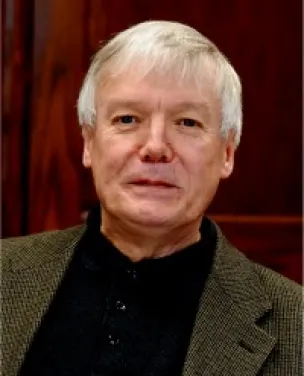Roy Clarke

Faculty Affiliate
Physics Department, College of Literature, Science, and the Arts
- B.S. Queen Mary College, University of London, 1969
- Ph.D. Queen Mary College, University of London, 1973
Research in the Clarke group is focused on the role of interfaces in thin films and quantum nanostructures. Several projects are currently underway, investigating the unusual structure and dynamics of condensed matter systems where the boundaries between dissimilar materials determine the physical properties. Examples include multilayer heterostructures of magnetic and semiconducting materials, quantum dots and nanowires, and atomic-layer superlattices. Complex oxide heterostructures are of particular interest because of the unusually broad range of correlated electron behavior they exhibit, including superconductivity, coupled dielectric and magnetic ordering (multiferroicity), metal-insulator transitions and spintronic transport.
Experiments at the ultrafast/ultrasmall temporal/spatial scales require specialized instrumentation to probe nanoscale properties: x-ray synchrotron radiation from accelerator-based sources (e.g., the Advanced Photon Source at Argonne National Laboratory); ultrafast optical pump-probe spectroscopy using dual mode-locked fiber lasers in asynchronous sampling mode; femtosecond time-resolved photoluminescence spectroscopy (Center for Nanoscale Materials, Argonne National Lab); and nanoscale materials modification and deposition using femtosecond laser pulses (Center for Ultrafast Optics).
Specific projects currently include:
- ferroelectric heterostructures containing ultrathin layers of BaTiO3
- the conducting interface between LaAlO3 and SrTiO3
- effects of lattice mismatch strain on ultrathin BiFeO3 and BiCrO3 films
- dynamics of spin waves in LaSrMnO3 heterostructures
- nanostructured Bi2Te3 and Sb2Te3 films
- core-shell structures in III-V quantum dots made by droplet epitaxy
- carbon nanostructures produced by ultrafast laser-matter interactions
Some of these projects have direct practical applications, including energy storage and conversion. These aspects of the research are pursued in the Center for Solar and Thermal Energy Conversion, an Energy Frontiers Research Center (EFRC) funded by the Department of Energy. The Clarke group is also actively involved in entrepreneurship resulting in several recent inventions and tech transfers, including the development of real-time, in-situ thin-film metrology approaches for the semiconductor industry.
The group’s work is currently funded by the National Science Foundation, the Department of Energy, the Air Force Office of Scientific Research, and the Michigan Economic Development Corporation.
Professor Clarke is a Fellow of the American Physical Society, and received the Presidential Award for Excellence in Science, Mathematics and Engineering Mentoring in 2011.